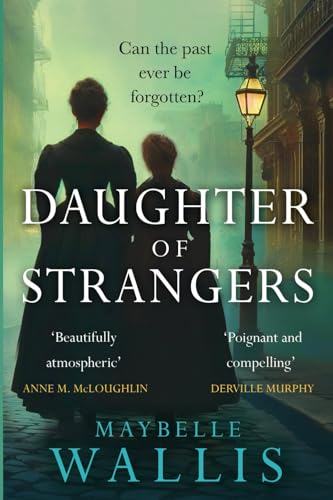Daughter of Strangers
Manhattan, 1854: Whilst most of the third volume of Wallis’s Doughty trilogy is set in New York, it opens five years earlier with an eviction in County Cork during the famine; a family is turned out in the cold and their home is torched.
Orla, the only survivor of this calamity, is the daughter of strangers of the title. Adopted by William Doughty, late of Dublin Fever Hospital and now a pathologist in New York, and his wife Jane, and now on the cusp of adolescence, Orla is showing significant talent as a singer, but with it all the signs of what we would now call PTSD.
An attempt to board her in a Ladies’ Seminary, where she will be taught by the Doughtys’ friend Anna, has dramatically unforeseen consequences, linked all the way back to that terrible day of the eviction. Anna is admired by Joseph, now a colleague of William’s, but who also has a history, a past with Young Ireland that compelled him to flee his native country, and which poses a significant obstacle to his wooing of Anna.
When Joseph realises that a corpse under his dissecting knife is a murder victim, and was an Irish doctor like himself, the two threads of the story begin to entwine, putting Joseph’s life in danger.
Daughter of Strangers is a love story, an elegant and keenly-plotted thriller and an utterly convincing view into mid-19th-century medicine. Wallis’s research is impressive without weighing the narrative down. Instead, sensory detail enriches her prose, be it in the hissing of gas lights in a glittering opera house, the texture of clothing or the handling of medical instruments. Read the rest of the trilogy, in which each volume works as a standalone, but this is her best novel yet.










